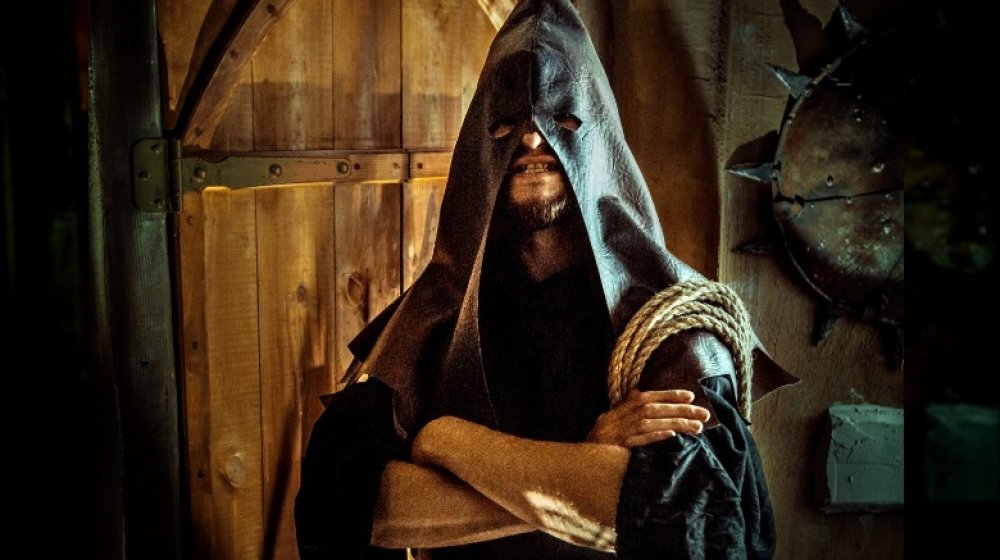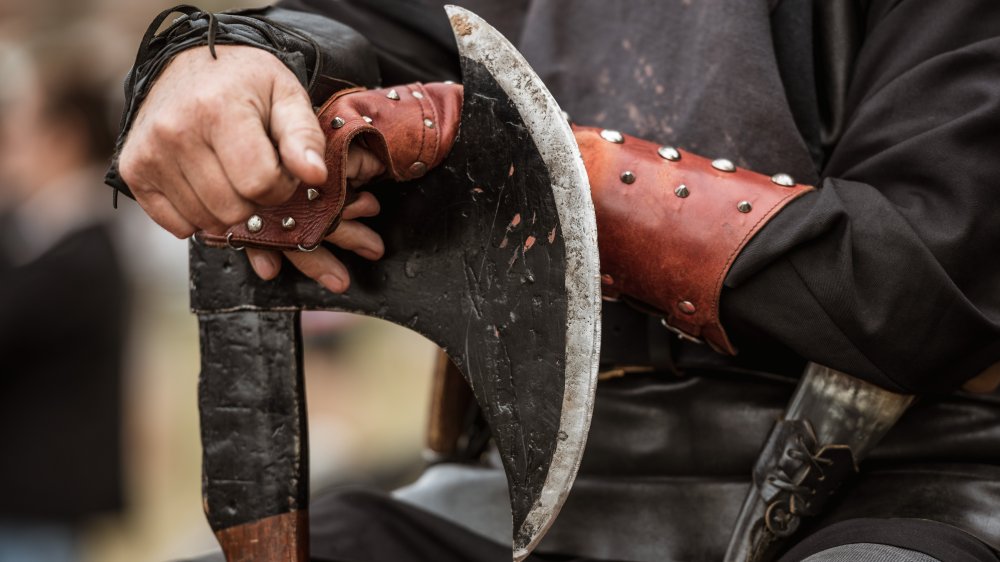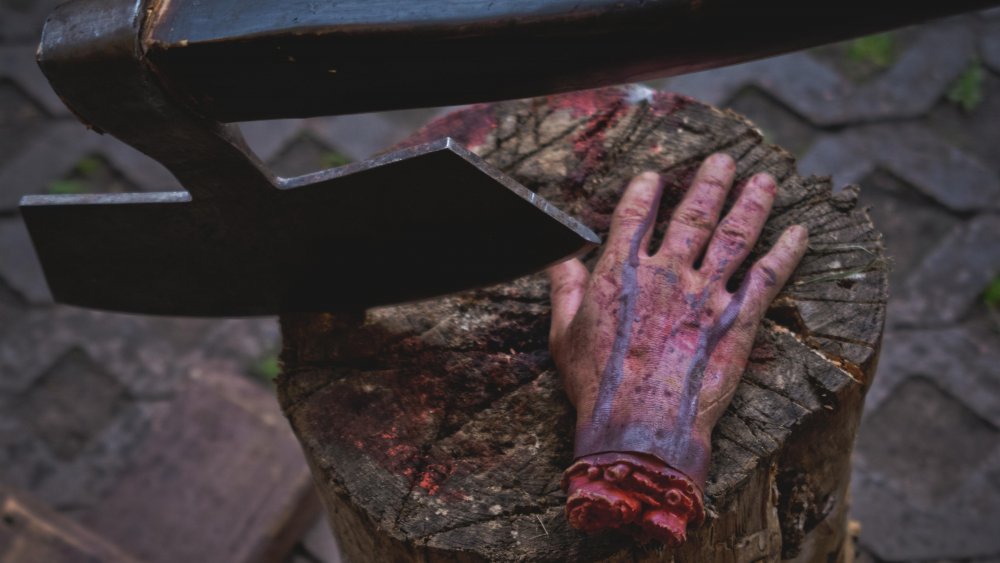The Truth About Executioners In The Middle Ages
Pop culture paints a grim image of the medieval executioner. More monster than man, he's practically Ramsay Bolton with a black hood. He reeks of evil, masquerading as a hound of justice when he's truly a Cujo who hungers to sink his fang-like blade into the necks of condemned criminals. After all, the Middle Ages were the golden age of sadism, a time when torturous interrogations and grotesque executions were encouraged, according to Gizmodo. So naturally, all the bloodthirsty brutes of yore were practically foaming at the mouth in excitement and leapt at the chance to kill for a living, right? Wrong — dead wrong, in fact.
Deadly dynasties
Perhaps some executioners got a kick out of decapitations or felt warm and fuzzy when boiling people in oil, but many of them simply had no choice in the matter. Live Science provides the example of Frantz Schmidt, a 16th-century executioner living in Bavaria. Schmidt inherited his job from his father, who "unwillingly" assumed the role of royal executioner after a prince appointed him to the position. This was a common occurrence in the Middle Ages and resulted in the formation of so-called "execution dynasties."
Despite the swanky name, being part of an execution dynasty didn't make someone a bigshot. Instead it turned that person into an outcast. Churches rejected executioners, and some schools refused to admit the kids of executioners. And they could forget about being invited to parties. However, the work had perks as well. Executioners often received free housing and a special tax benefit that allotted them a portion of free food and drinks from vendors.
Executioners were cruel to be kind
The kinds of deaths doled out in the Middle Ages were unspeakably cruel and unthinkably painful. Per the journal Annals of Burns and Fire Disasters, executions varied in accordance with the kind of crime and the social standing of the criminal. Robbers got hanged, noblemen got beheaded, adulterers got stoned to death, and heretics were burned to death. King-slayers were drawn and quartered or buried under a shallow pile of rubble and questionable writing in the final season of Game of Thrown-Away Character Arcs.
This might sound like the height of bloodlust, but as Der Spiegel describes, all that agony was "designed in part to ensure the salvation of the convicted person's soul." Executioners saw it as their duty to inflict agony in order to appease the "offended God." They were cruel only to be kind, and some were too kind to be cruel, instead pretending to perform an excruciating execution while secretly killing them in a less painful way.


